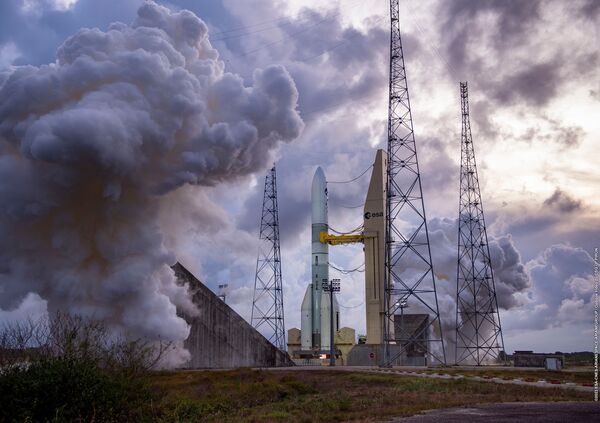
The Ariane 6 launcher will launch the first batch of G2G satellites in 2026 and 2027. Pictured is a successful long-duration hot-fire test of the rocket on its launch pad at Europe's Spaceport in French Guiana in September 2023. The rocket is in its final stages of testing before its inaugural flight in June 2024. (Arianegroup)
The new Ariane 6 rocket will launch the initial batch of Galileo Second Generation (G2G) navigation satellites into orbit in 2026 and 2027, Arianespace announced on 29 April.
A total of four G2G satellites will be sent into orbit on Ariane 6 over two separate launches in 2026 and 2027. Airbus Defence and Space and Thales Alenia Space are each building six satellites, which together form the first fleet of G2G satellites, the company detailed.
The G2G satellites will use electric propulsion and host a more powerful navigation antenna as well as improved atomic clocks and fully digital payloads compared with the first-generation Galileo satellites. Each spacecraft will weigh 2,000 kg, orbiting at an altitude of 23,222 km (medium Earth orbit).
Prior to this announcement, the SpaceX Falcon9 medium-lift launch vehicle sent two first-generation Galileo satellites into orbit on 27 April as part of launch mission L12. Thirty satellites are now in orbit, expanding the constellation as well as its reliability and resilience.
Galileo is a dual-use global navigation satellite system (GNSS) that began operations in 2016. Funded by the European Union, the constellation provides vital positioning, navigation, and timing services for the civil and defence community.
Looking to read the full article?
Gain unlimited access to Janes news and more...







